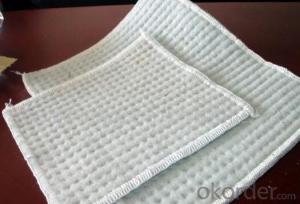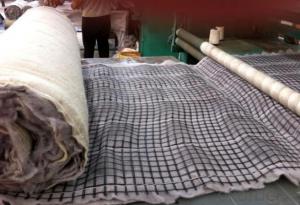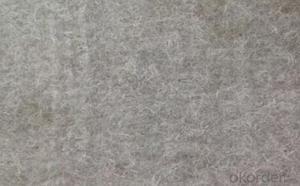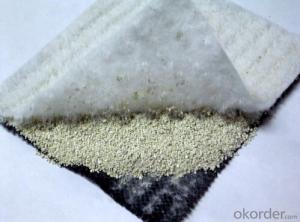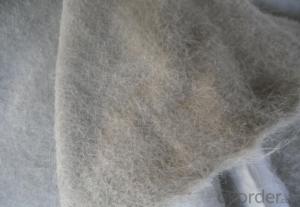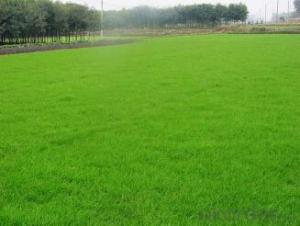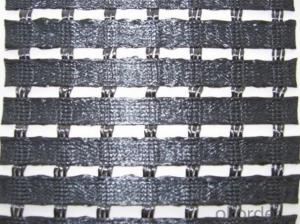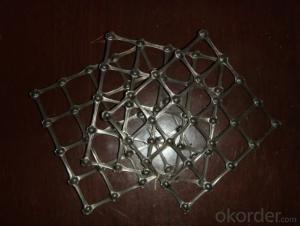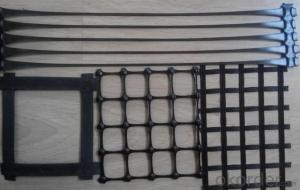Nutrition Geotextile for Greening Plants
- Loading Port:
- Qingdao
- Payment Terms:
- TT OR LC
- Min Order Qty:
- 5000 m²
- Supply Capability:
- 2000000 m²/month
OKorder Service Pledge
OKorder Financial Service
You Might Also Like
Nutrition geotextile in water environmental engineering .
Specification:
Made from PROT,L etc.natural fiber by nonwoven process,it’s composed of nonwoven geotextile layer and nutritive layer for plants.
nutrition geotextile in water environmental engineering . Specification:
1. 200g/m2-400g/m2
2. One side thermally bonded nonwoven geotextile
3. Both sides thermally bonded nonwoven geotextile
Product Feature:
1. Simple and fast construction
2. Achieve the greening effect quickly after construction
3. Due to the grass and composite fiber fabrics become into one integration, so it has the ability of certain degree of flow resistance for the water rising before the grass survive.
4. Composite fiber fabric is a continuous structure from slope top to slope toe, both ends are fixed, has high water flow resistance.
Technical Specification
5.0 m length and 1.05 m width. Reverse side all used filter material. Grass seeds: Bermuda grass (warm season grass), Bahia grass (warm season grass), Kentucky bluegrass (cold season grass), Tall fescue grass (cold season grass), Red fescue grass (cold season grass). Plant height: 0.1 ~ 0.5 m.
| NO. | Items | Specification | Notes | |||
| 1 | Total unit area weight g/sq.m | ≥380 | ||||
| 2 | dimension | width m | 1.0~2.0 | |||
| length m | as per user’s request | |||||
| 3 | Composite fiber fabrics | Material | Polyester Fiber | High strength PET | ||
| Unit area weight g/sq.m | ≥160 | |||||
| Mesh dimension mm | 8×8 | |||||
| Extension strengh kn/m | ≥11 | MD & CD | ||||
| 4 | Filtra layer | Material | Polyester non woven geotextile | |||
| Unit area weight g/sq.m | ≥40 | |||||
| 5 | Grass seeds, Fertilizer | Type | According to actual situation choose 3~5 grass seeds | |||
| Plant height m | 0.1~0.3 | |||||
| 6 | Fiber layer | Material | wood pulp cellulose | |||
| Unit areaweight g/sq.m | ≥15 | |||||
| 7 | flow resistance | ≥4 | not allow appear scour, suction and blanket turn-over etc. damage phenomenon | |||
| M/s | ||||||
| 8 | Anti-UV strengh conservation rate % | 65~80 | 3000hrs Continuously exposure 3000hrs | |||
| 9 | Supporting spare parts | ABS fastening nail | Material | ABS Resin | Fixed between two blankets by length direction | |
| Fiber diameter mm | 35 | |||||
| Nail length mm | 325 | |||||
| Lnail | Material | Steel wire (content 10% zinc-aluminium alloy) | Used to fix single blanket | |||
| Fiber diameter mm | 4 | |||||
| Nail length mm | 200 | |||||
| ABS connecting nail | Material | ABS Resin | Used in the slope between the two blankets ( width direction) | |||
| Nail length mm | 38 | |||||
| Connecting fiber | Material | High strength Polypropylene | Used in the slope between the two blankets ( width direction) | |||
| Length mm | Cut as per request | |||||
APPLICATION:
Generally laid on the river channel, slope protection etc. slope revetment projects, to control the water erosion, soil loss, meantime can reach the effect of slope ecological restoration and landscape greening, making river back to natural.
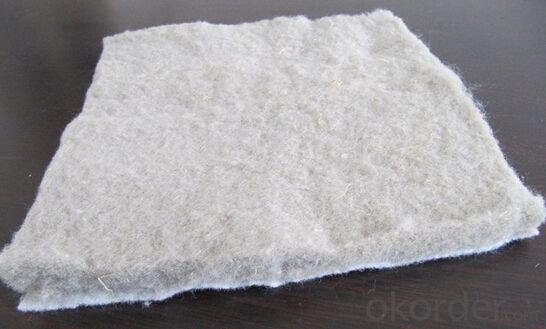

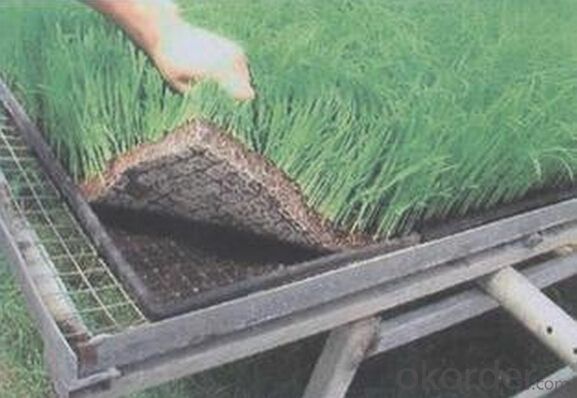

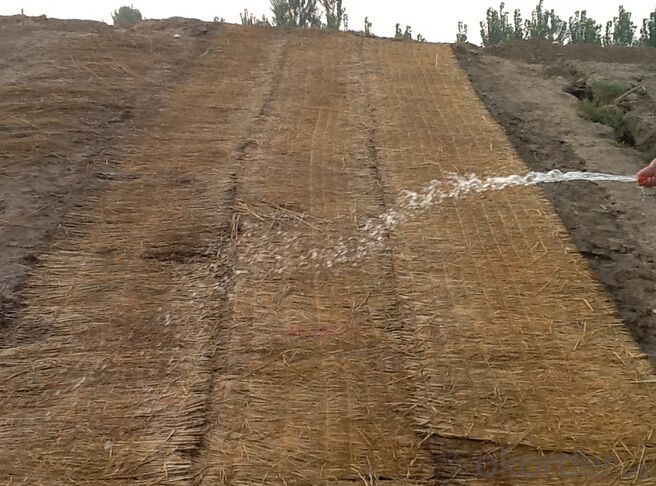
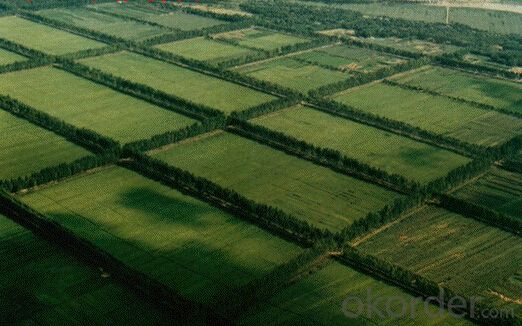
- Q:I am a site using two-way 80 plastic geogrid, the need to use U type nails specifications and prices? Consultation with the construction process, thank you.Correction: two-way 80 steel plastic geogrid.
- First, the construction steps1, the basement cleaning and compactionClear the surface of the original surface and exclude surface water, clear surface thickness of 30cm, clear the table after the impact roller compaction base, the compaction degree of not less than 93%.
- Q:What are the applications of geogrids in civil engineering?
- Geogrids have numerous applications in civil engineering, primarily in soil stabilization and reinforcement. They are extensively used in road construction to improve the strength and stability of the subgrade and prevent rutting and cracking. Geogrids also find applications in retaining walls, embankments, and slopes, where they enhance the bearing capacity and reduce soil erosion. Additionally, they are utilized in landfills to enhance the stability of waste materials and in pavement overlays to reduce reflective cracking. Overall, geogrids play a crucial role in enhancing the durability and performance of various civil engineering structures.
- Q:What are the factors to consider when selecting a geogrid for a specific application?
- When selecting a geogrid for a specific application, there are several factors that need to be considered. These include the required strength and stiffness of the geogrid, the type and condition of the soil being reinforced, the anticipated loads and stresses the geogrid will be subjected to, the desired design life of the structure, and any environmental or chemical factors that may affect the performance of the geogrid. Additionally, factors such as installation and maintenance requirements, cost, and availability should also be taken into account. Overall, a thorough analysis of these factors will help in selecting the most suitable geogrid for the application at hand.
- Q:Geogrid width mean?
- Because the geogrid is packed, generally (1--6) * (50 or 100 m)
- Q:Can geogrids be used in stabilization of mine tailings ponds?
- Yes, geogrids can be used in the stabilization of mine tailings ponds. Geogrids are engineered materials that provide reinforcement and stability to soil and other materials. They can be used to reinforce the embankments and slopes of mine tailings ponds, preventing erosion and enhancing overall stability. Additionally, geogrids can improve the long-term performance of the pond by reducing settlement and increasing load-bearing capacity.
- Q:What is the tensile strength of geogrids?
- The tensile strength of geogrids can vary depending on the specific type and design, but generally, it ranges from 20 to 200 kilonewtons per meter.
- Q:Geogrid and geotextile, the role is the same?
- Geogrid and geotextile are different
- Q:Are there any limitations or disadvantages of using geogrids?
- Yes, there are some limitations and disadvantages of using geogrids. 1. Cost: Geogrids can be relatively expensive compared to other soil reinforcement methods. The cost of materials and installation can sometimes be prohibitive, especially for large-scale projects. 2. Limited Applications: Geogrids are not suitable for all types of soil conditions. They are most effective in granular soils, but their performance in cohesive soils or unstable slopes may be limited. 3. Installation Challenges: Proper installation of geogrids requires specific expertise and equipment. If not installed correctly, their effectiveness can be reduced, leading to potential failure or performance issues. 4. Longevity: The long-term durability of geogrids can vary depending on factors such as exposure to environmental conditions, chemical degradation, and mechanical damage. In some cases, they may require regular maintenance or replacement to ensure continued effectiveness. 5. Compatibility: Geogrids may not always be compatible with certain construction materials or methods. It is important to consider their compatibility with other materials used in the project to avoid any adverse effects on performance. Despite these limitations, geogrids are still widely used in various geotechnical applications due to their ability to improve soil stability and enhance the performance of structures.
- Q:Can geogrids be used in soil stabilization for slopes?
- Yes, geogrids can be used in soil stabilization for slopes. Geogrids provide reinforcement to the soil, increasing its stability and preventing erosion. They are commonly used in civil engineering projects for slope stabilization to enhance the overall strength and integrity of the soil.
- Q:What are the long-term performance characteristics of geogrids?
- The long-term performance characteristics of geogrids include factors such as durability, stability, and strength. Geogrids have been proven to maintain their effectiveness over extended periods of time, providing reliable reinforcement and stabilization in various applications. They exhibit excellent resistance to environmental factors like UV radiation, moisture, and chemical exposure, ensuring their longevity. Geogrids also possess high tensile strength, allowing them to withstand heavy loads and distribute stresses effectively. Overall, geogrids offer long-lasting performance, making them a reliable solution for soil reinforcement and erosion control in engineering and construction projects.
1. Manufacturer Overview |
|
|---|---|
| Location | |
| Year Established | |
| Annual Output Value | |
| Main Markets | |
| Company Certifications | |
2. Manufacturer Certificates |
|
|---|---|
| a) Certification Name | |
| Range | |
| Reference | |
| Validity Period | |
3. Manufacturer Capability |
|
|---|---|
| a)Trade Capacity | |
| Nearest Port | |
| Export Percentage | |
| No.of Employees in Trade Department | |
| Language Spoken: | |
| b)Factory Information | |
| Factory Size: | |
| No. of Production Lines | |
| Contract Manufacturing | |
| Product Price Range | |
Send your message to us
Nutrition Geotextile for Greening Plants
- Loading Port:
- Qingdao
- Payment Terms:
- TT OR LC
- Min Order Qty:
- 5000 m²
- Supply Capability:
- 2000000 m²/month
OKorder Service Pledge
OKorder Financial Service
Similar products
New products
Hot products
Related keywords
